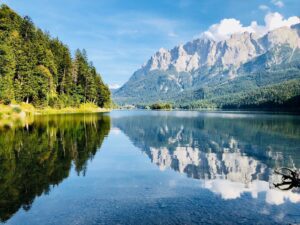The German Alps, also known as the Bavarian Alps, offer a plethora of natural beauty all year round. It is a sub-mountain range of the Alps.
They are a popular destination for skiers and those looking for a winter wonderland in the colder months. As the snow melts, the area transforms into a picturesque landscape with hiking trails, fields of wildflowers, and the soothing sound of cowbells in the summer.
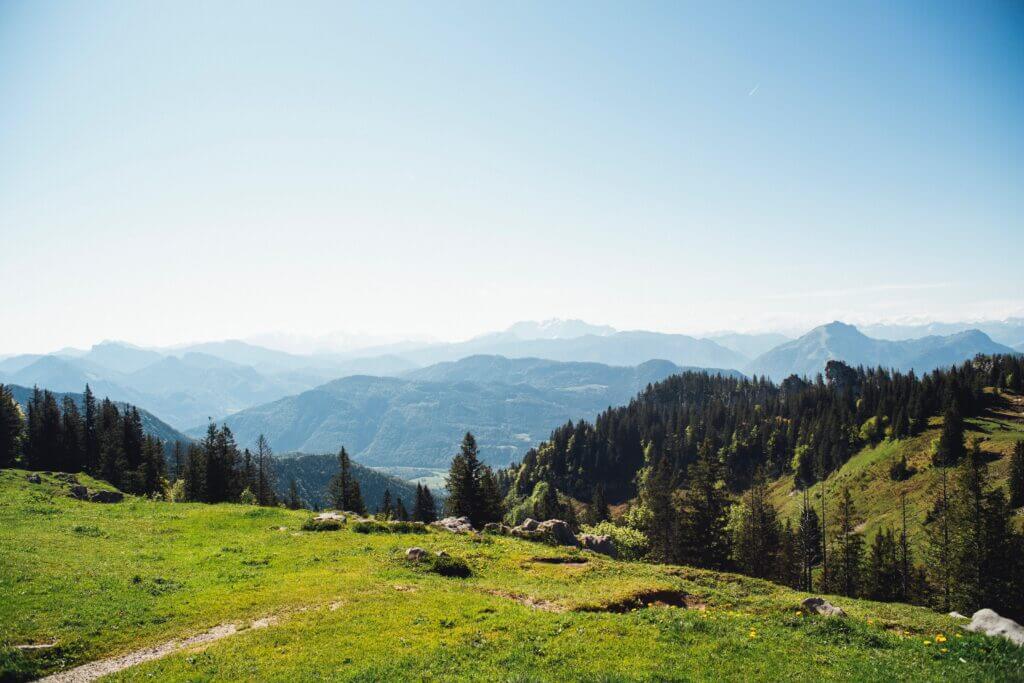
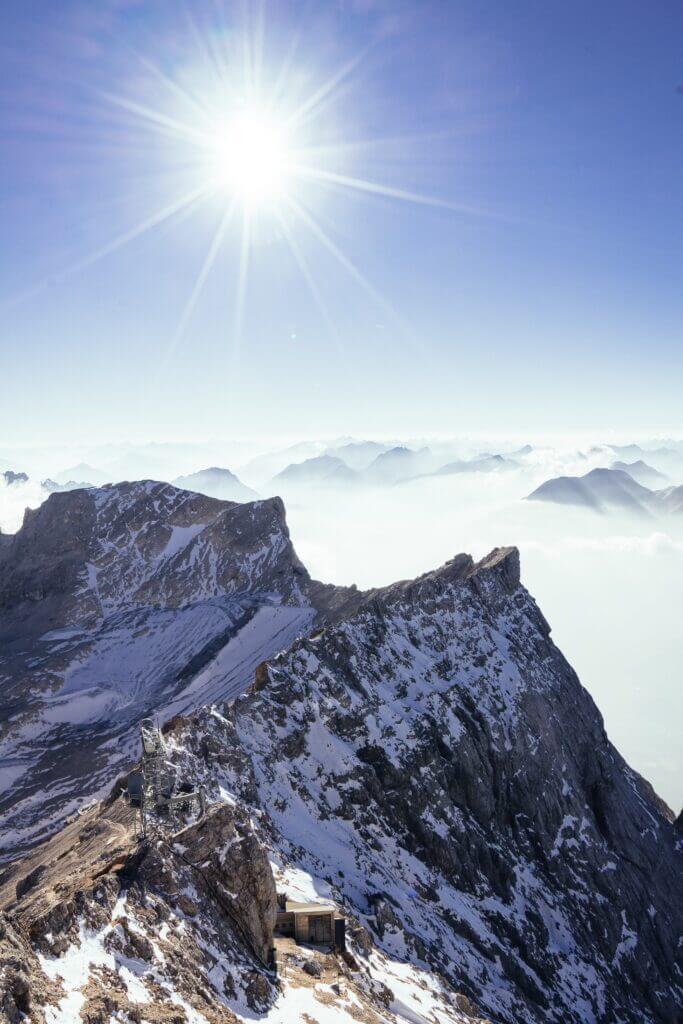
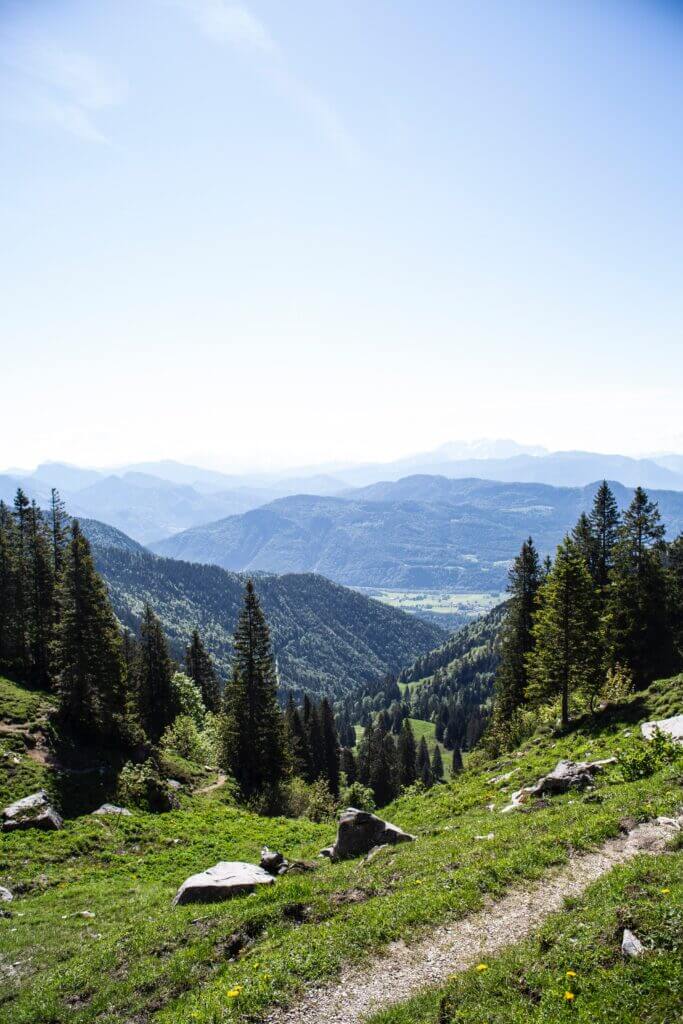
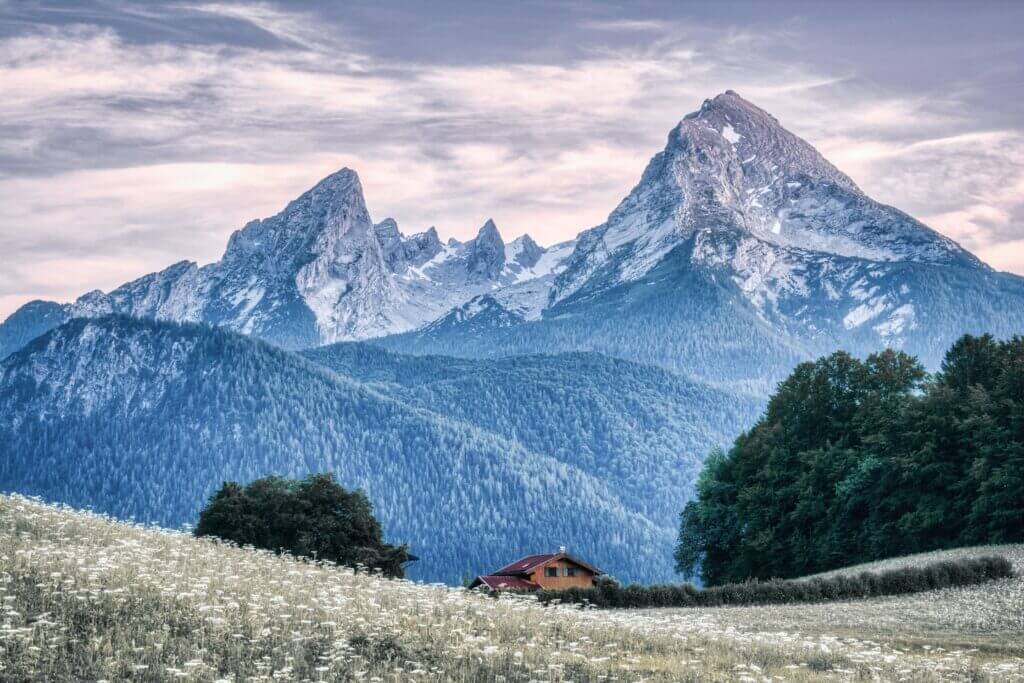
In the southern region of Bavaria, grand castles and grandiose churches are interspersed among the alpine forests and mesmerizing turquoise lakes. Cable cars take visitors over secluded gorges, revealing views reminiscent of fairytale illustrations. After a day of exploring these picturesque landscapes, whether on skis or hiking, one can unwind in a hot tub in a spa retreat, surrounded by idyllic scenery.
Overview of the Bavarian Alps
The Bavarian Alps, or Bayerische Alpen, are a majestic range of mountains that extend from the isolated southeastern corner of Germany to the Allgäu region near Lake Constance. They serve as a natural border with Austria.
Although some ranges located further south may be taller, the abrupt rise of these mountains from the foothills makes for an even more striking visual impact.
The area is dotted with charming villages adorned with frescoes, spas and wellness retreats, and a variety of outdoor activities such as skiing, snowboarding, hiking, canoeing, and paragliding, many of which can be enjoyed year-round. Skiing is available from late December to April, while summer activities are offered from late May to November.
Some of the most popular destinations in the region include Garmisch-Partenkirchen. It is one of the largest resorts and a popular getaway spot for city dwellers in Bavaria. Other notable places include Berchtesgaden, Füssen and Oberstdorf, which also make for great starting points for your trip.
The Bavarian Alps’ main summits and what to expect
Even though the mountains in the region are not particularly tall, with Zugspitze being the highest at 2,962m, they make a striking impression on both visitors and locals. This is due to their steep ascent from the surrounding Bavarian countryside, south of Munich, which creates the illusion that they are taller than they actually are.
In addition, the mountains, being older in geological terms, have well-defined peaks, providing visitors with spectacular views such as the iconic Watzmann, the home peak of Berchtesgaden.
The region is also home to many crystal-clear alpine lakes and flowing rivers. Thick forests of fir trees conceal a wealth of wildlife and miles of marked hiking trails that can take you across the border into Austria. The area is also popular among motorcyclists and mountain bikers.
The term “Bavarian Alps” encompasses several different parts of the mountain ranges, including: Allgäu Alps, Ammergau Alps, Wetterstein, Bavarian Prealps, Karwende, Chiemgau Alps, and Berchtesgaden Alps.
The tallest mountain in the Bavarian Alps and in all of Germany is Zugspitze. Located in the western section of the Wetterstein range, it has a distinct alpine character and reaches a height of 2,962m with its two small glaciers.
The part of the Bavarian Alps located in Austria is also referred to as the North Tirol Limestone Alps. The range’s steep incline faces the Inn River valley to the south, while its gentle sloping terrain allows for cattle grazing to the north.
Best time to visit the Bavarian Alps
The best season to visit the Bavarian Alps is between June and September, when the weather is at its most pleasant. Although the area is surrounded by snow-capped mountains and is located at a high altitude, which means the climate is generally cold, the mornings and afternoons can be especially chilly, with freezing temperatures at night. However, the Bavarian Alps are a beautiful and romantic destination, especially for honeymooners, and the months of August and September offer the added benefit of smaller crowds.
Selection of best things to see and do In the Bavarian Alps
The Zugspitze
Zugspitze is the highest peak in Germany and among the mountains in the Bavarian Alps, standing at 2,962 meters. It’s a popular destination for skiers and hikers. The Zugspitze-Westgipfel Station, located at 2,950 meters, features a restaurant with one of the most spectacular views of the Bavarian Alps.
This mountain also offers an amazing ecotourism opportunity, with three glaciers on its slopes, valleys with picturesque Bavarian villages, many lakes, and three peaks, making for a unique and unforgettable alpine experience.
Skiing in the Bavarian Alps
Bavaria has a large number of ski resorts, with a total of 267 in the region, the majority of which are located in the Alps.
- The Steinplatte / Winklmoosalm Ski Resort is the largest of the many ski resorts in Bavaria, it is located partly in the Chiemgau Alps in the east of the region and partly in the Pillersee Valley (Pillerseetal) in Tyrol, Austria. The resort boasts a total of 42 km (26 mi) of slopes and 14 ski lifts.
- On the west side of the German Alps, the most significant ski resort is Oberjoch Ski Resort, it features 32 km (20 mi) of slopes and 5 ski lifts.
- Zugspitze Ski Resort, located in the center of the range, offers a decent ski area, with 20 km (12 mi) of slopes and 10 ski lifts to choose from.
Fairy tale at Neuschwanstein
Neuschwanstein Castle, located in a Bavarian forest, is a 19th-century Romanesque Revival palace that resembles something from a fairy tale. It is one of the most popular castles in Germany and is just over 1.5 hours’ drive from Munich. The interior of the palace is just as grand as the exterior.
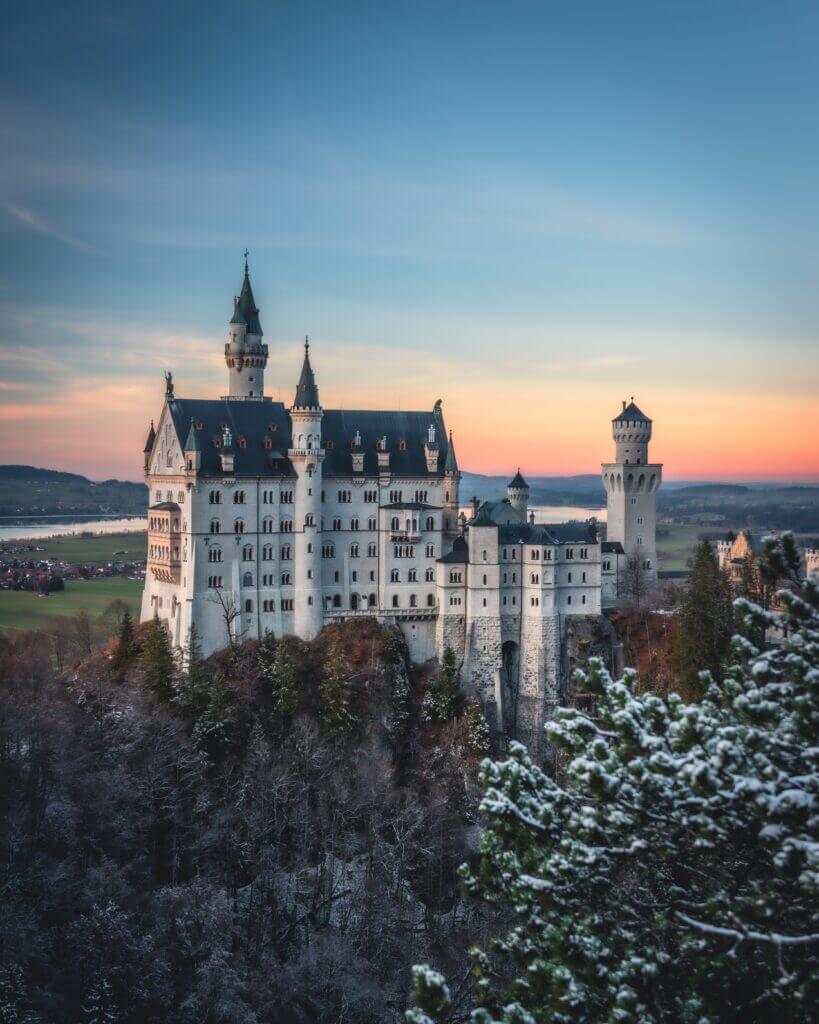
Neuschwanstein Castle is picturesque in every season, but the limestone walls look particularly stunning against the golden autumn hues. Winter transforms the palace and its surroundings into a winter wonderland, as the snow covers everything. To get the best views and take great photos, take a 15-minute walk uphill to Marienbrücke, which offers an overlook of the valley and plateau below.
Alpine beauty at its finest at Eibsee
Powerful natural forces during the last ice age formed Eibsee lake, one of the most beautiful lakes in Germany. A giant rockfall created the basin of the lake. You can explore the shores of the lake by walking around the 7.1-km loop trail from the Eibsee Hotel, while taking in the stunning blue waters and the 8 islands in the lake.
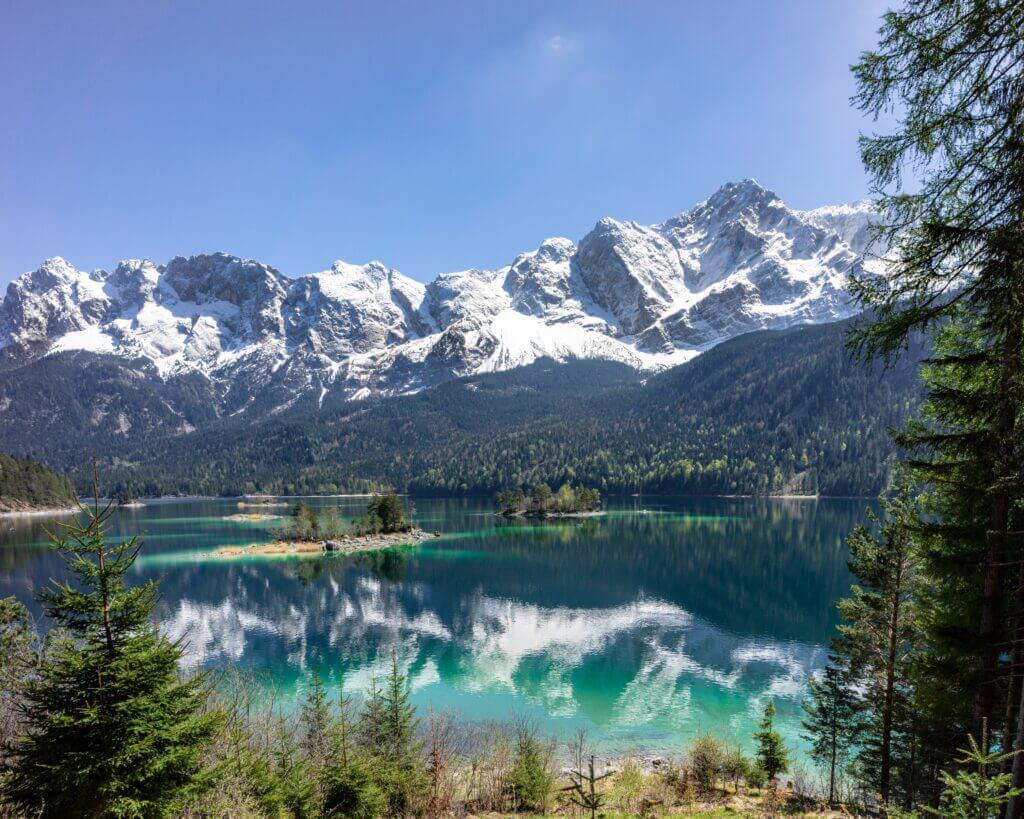
Eibsee is located at the foot of Germany’s highest mountain, the Zugspitze, taking a bird’s-eye view of the area is the best way to appreciate its beauty. Visitors can take either the cable car or cogwheel train to ascend the mountain. If you want to cool off during hot weather, you can go for a swim in the lake or explore by kayak.
Cross-country skiing at Oberammergau
Oberammergau is known for its exceptional trails, a mix of forest and sunlit paths. Cross-country skiers can enjoy over 100 km of trails throughout the region.
When snow is lacking, there are plenty of alternative activities and sights to keep visitors entertained in Oberammergau. Visitors can learn about local crafts at a wood carving demonstration, visit the peaceful Ettal Abbey, a Benedictine monastery and Baroque church just a 5 km drive away, or explore the opulent Linderhof Palace.
Where to stay in the German Alps
If you’re planning to hike and want to experience the most beautiful scenery in Bavaria, I recommend spending at least a few days or even a week or longer in the German Alps. Here are my top three destination recommendations:
Berchtesgaden National Park
If you’re looking for a destination that boasts breathtaking Alpine views and offers a wide range of hiking options, Berchtesgaden National Park is a great choice. The park is home to the renowned Lake Königssee and is one of only two national parks in Bavaria. Whether you’re a beginner or an experienced hiker, you’ll find plenty of trails to explore and enjoy the stunning scenery.
Garmisch-Partenkirchen
If you’re looking for a place in the German Alps that offers a mix of both a charming town and some of the most breathtaking hiking in the region, Garmisch-Partenkirchen is an excellent option. This town is home to some of the most challenging and rewarding trails in the Bavarian Alps, including the climb to the summit of Zugspitze, the highest mountain in Germany. Additionally, you can also take a cable car to reach the summit for a less strenuous experience.
Allgäu Alps
Nature gives a picturesque charm and idyllic atmosphere to The Allgäu Alps in the German Alps. For those who enjoy hiking, I recommend staying in Oberstdorf, the southernmost village in Germany, as it offers easy access to over 200 km of hiking trails for all skill levels.

